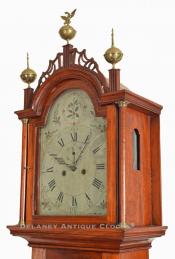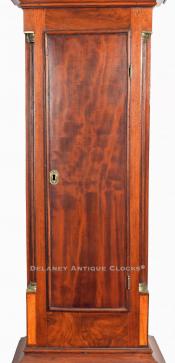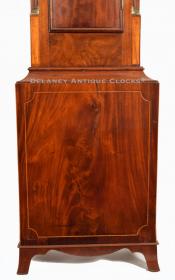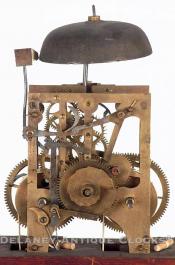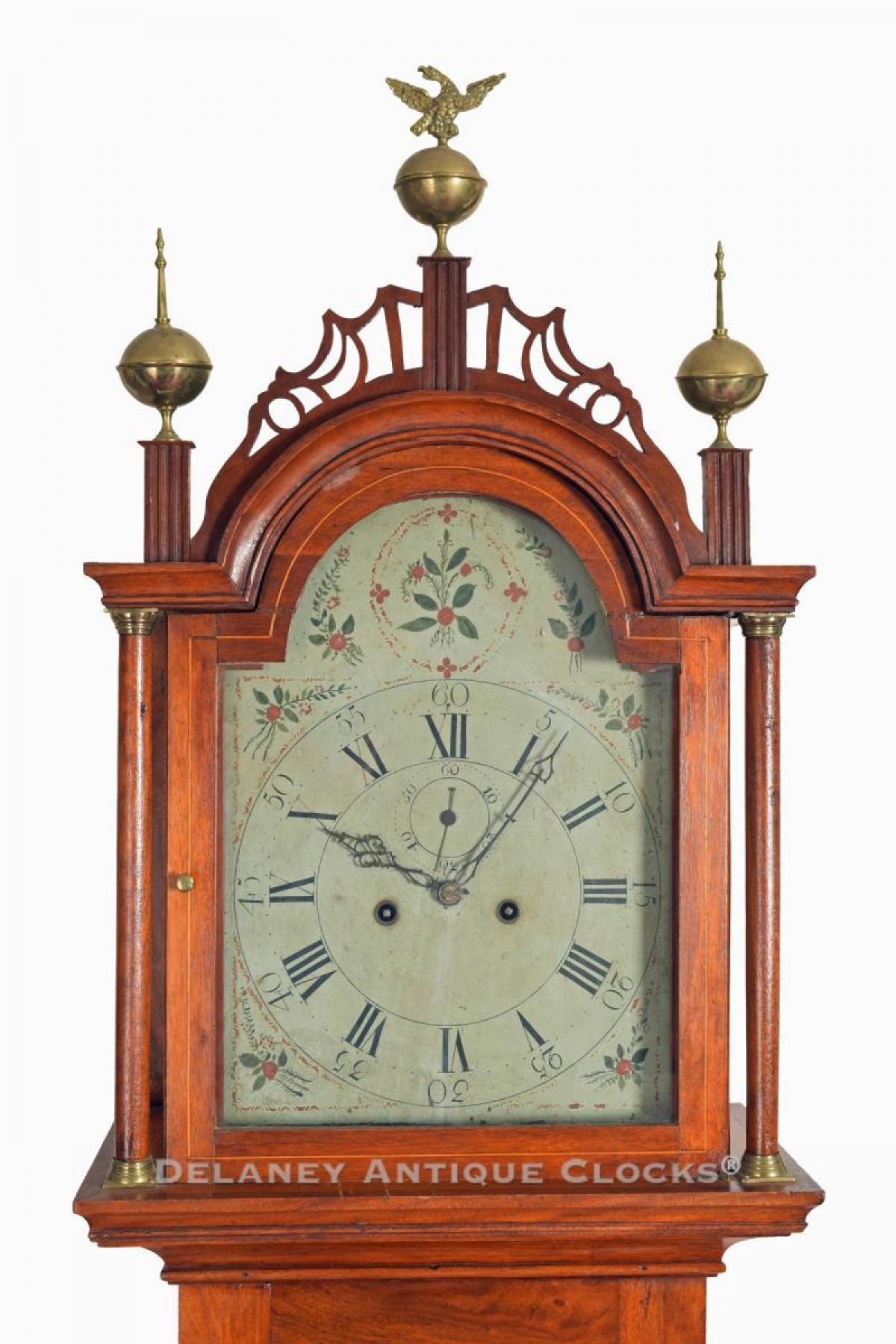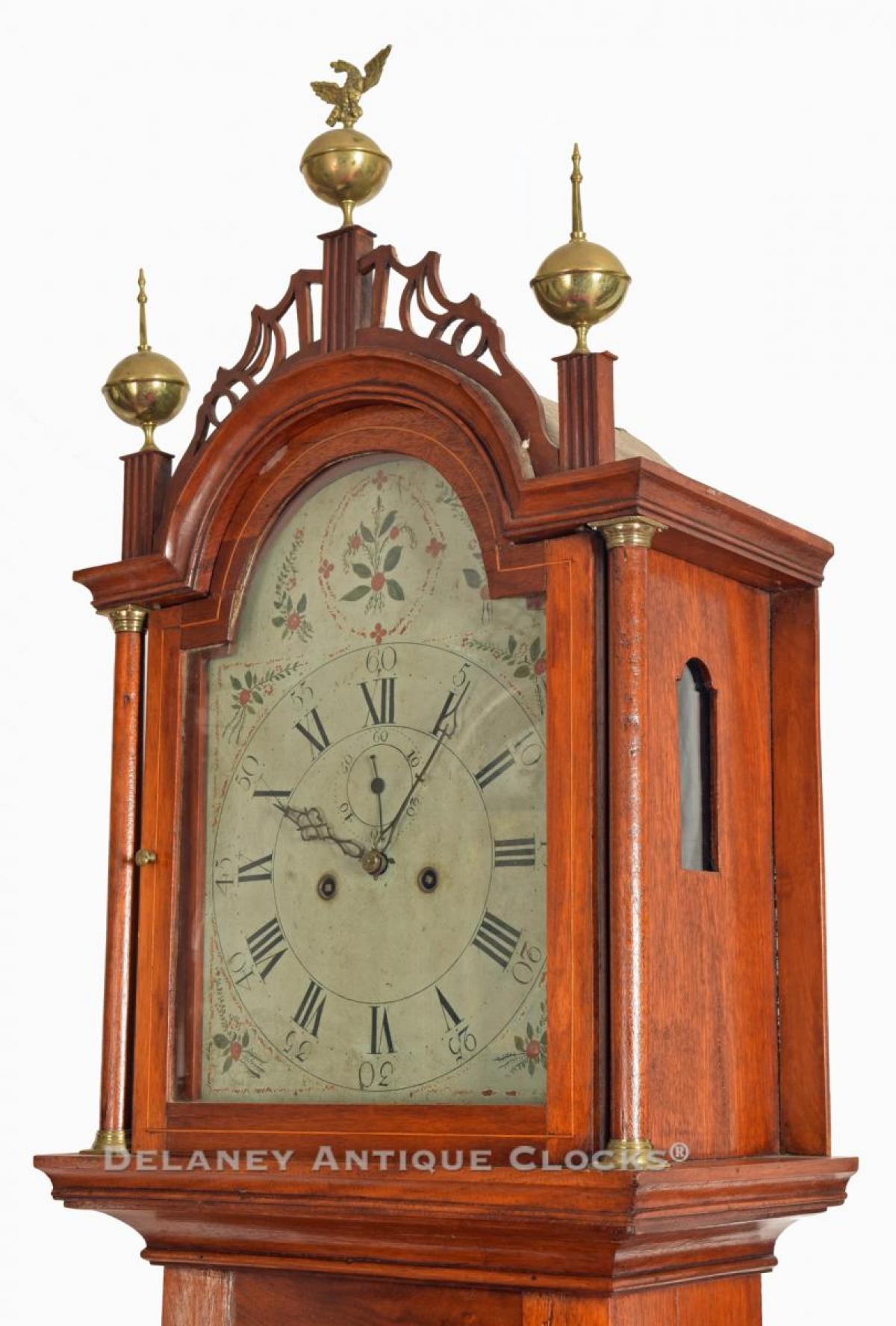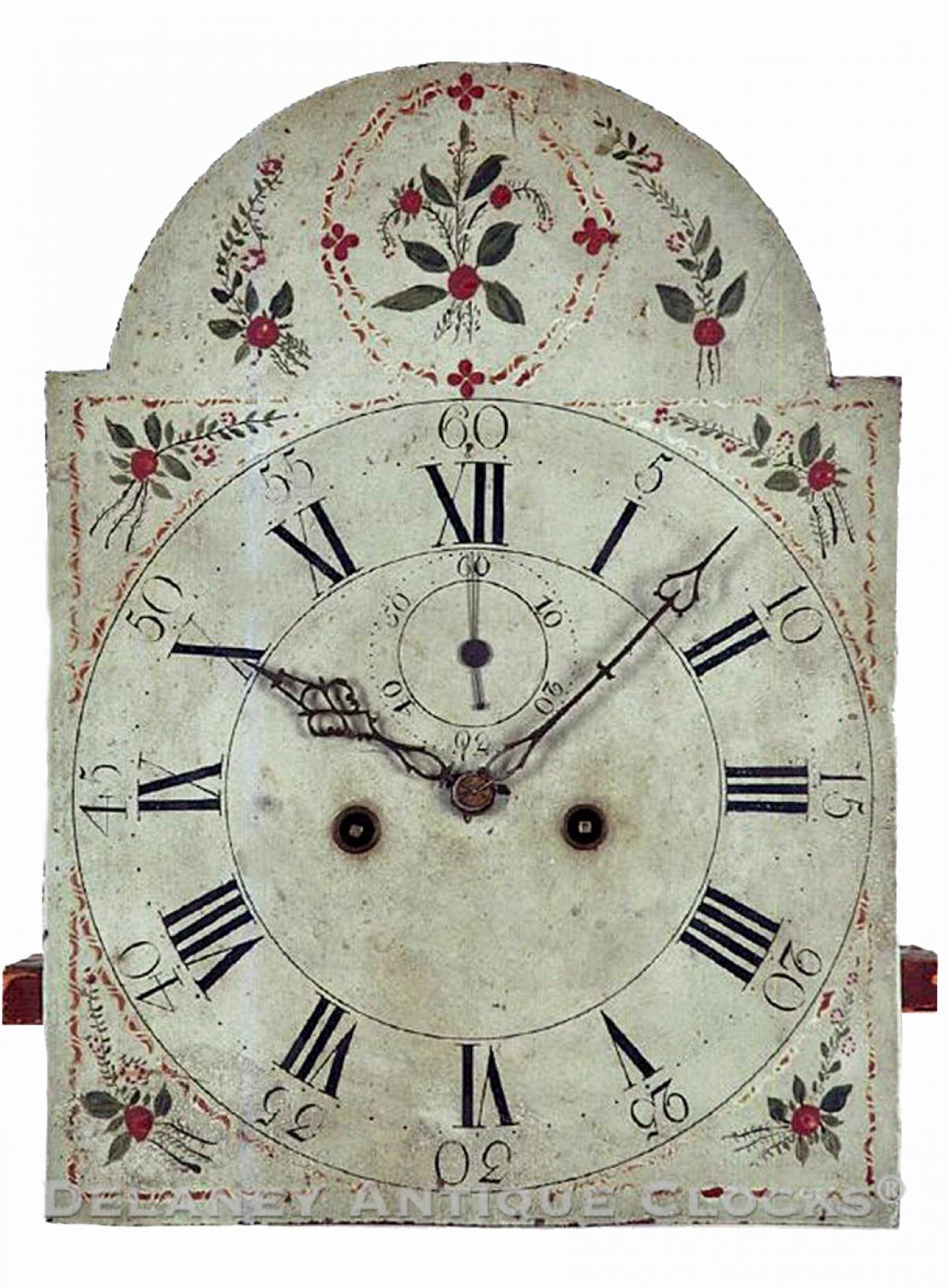A rural inlaid mahogany case tall clock of Coastal New England origin attributed to Lebbeus Bailey of Yarmouth, Maine. 29085.
This case exhibits northern New England proportions. The attribution to the Clockmaker Lebbeus Bailey is based on several construction features or designs. These include the case form, the distinctive painted dial, and the unusual construction of the movement.
This inlaid mahogany case is constructed with New England white pine as a secondary wood. The case stands on flared French feet. Their design includes a skirt or drop apron that hangs below the base. An applied molding separates the feet from the base. A lively grain pattern is selected for the front panel. This is richly grained and exhibits a variety of mellow color tones. A box framing of line complex inlay is laid out around the perimeter. This pattern uses ovolo or cutout corners. The sides or front corners of the base are also light-lined inlaid. The waist section is fitted with a rectangular-shaped waist door. This door is trimmed with a simple half-round applied molding. The waist door provides access to the two drive weights and the brass-faced pendulum bob. Reeded quarter columns flank the sides of this case. They terminate in brass quarter capitals. Below the columns are panels of flaming birch veneers. This light wood contrasts nicely with the darker mahogany. The bonnet is fitted with a traditional New England-style fretwork design. It is supported with three reeded plinths, each supporting a brass ball finial. The center finial is decorated with an eagle on top. Fully turned bonnet columns ending in brass capitals flank the string-inlaid door. This bonnet door is arched and fitted with glass. The lower bonnet molding slightly protrudes from the plane of the upper arch molding. This molding is elevated and narrow by Boston standards. Looking closely, you can see the handwork done in the moldings.
The bonnet door opens to access the painted iron dial. This dial is painted in a distinctive hand of an unidentified local artist. Numerous dials are known to us that were painted by the same artist. The vast majority are found in Southern Maine and are associated with clocks constructed in the Rogers School of Clockmaking in Berwick, Maine. The ivory-painted background has an almost blueish hue in the paint. The spandrels and the decoration in the arch are distinctively designed in an almost fork art fashion. What would be a gold color decoration on English or Boston painted dials is painted in red on these. The floral details are very different from those of other dial shops. Arabic numerals are used to indicate the five-minute positions. A dotted minute circle separates these from the larger Roman-style hours. The dial is fitted with a seconds bit and a steel pointer above the center arbor. Larger hands display the time. This clock does not have a calendar day display.
The brass plates that frame this weight-driven two-train movement have been skeletonized. This process involves cutting away the extra brass from the plates. The brass conserved in this fashion was then used to construct the Clockmaker’s next mechanism. Removing the extra brass does not compromise the movement in any way. This practice was used extensively by the clockmakers in Southeastern Massachusetts. It is associated with John Bailey and his numerous apprentices. Lebbeus Bailey, 1763-1827, is thought to have trained with his older brother before he moved to Yarmouth, Maine, in 1791. The movement is designed to run for eight days fully wound. It is powered by two weights that descend inside the case behind the waist door. This movement is also designed to strike each hour on the hour on a bell mounted above the movement inside the case.
This clock was made circa 1805.
It stands 8 feet tall to the top of the center finial.
Inventory number 29085.
Lebbeus Bailey was born in Hanover, Massachusetts, in 1763. His career, which began in Hanover and continued in North Yarmouth, Maine, is a testament to his dedication and skill. His house, still standing in North Yarmouth, serves as a reminder of his contributions. He was the son of Colonel John, a shipbuilder, and Ruth Randall Bailey, and they were Quakers. It is believed that he and his brother Calvin (b 1761) served their apprenticeship with his older brother John II (b 1751). Lebbeus was listed as a clockmaker in Hanover from 1784 through 1791. In 1791, he moved to North Yarmouth, Maine, where he settled with his wife, Sarah Sylvester Myrick. Lebbeus set up a foundry and continued to make tall and shelf clocks and every type of metalwork that his customers needed. Lebbeus died on December 3, 1827.
A few tall case clocks are known.





